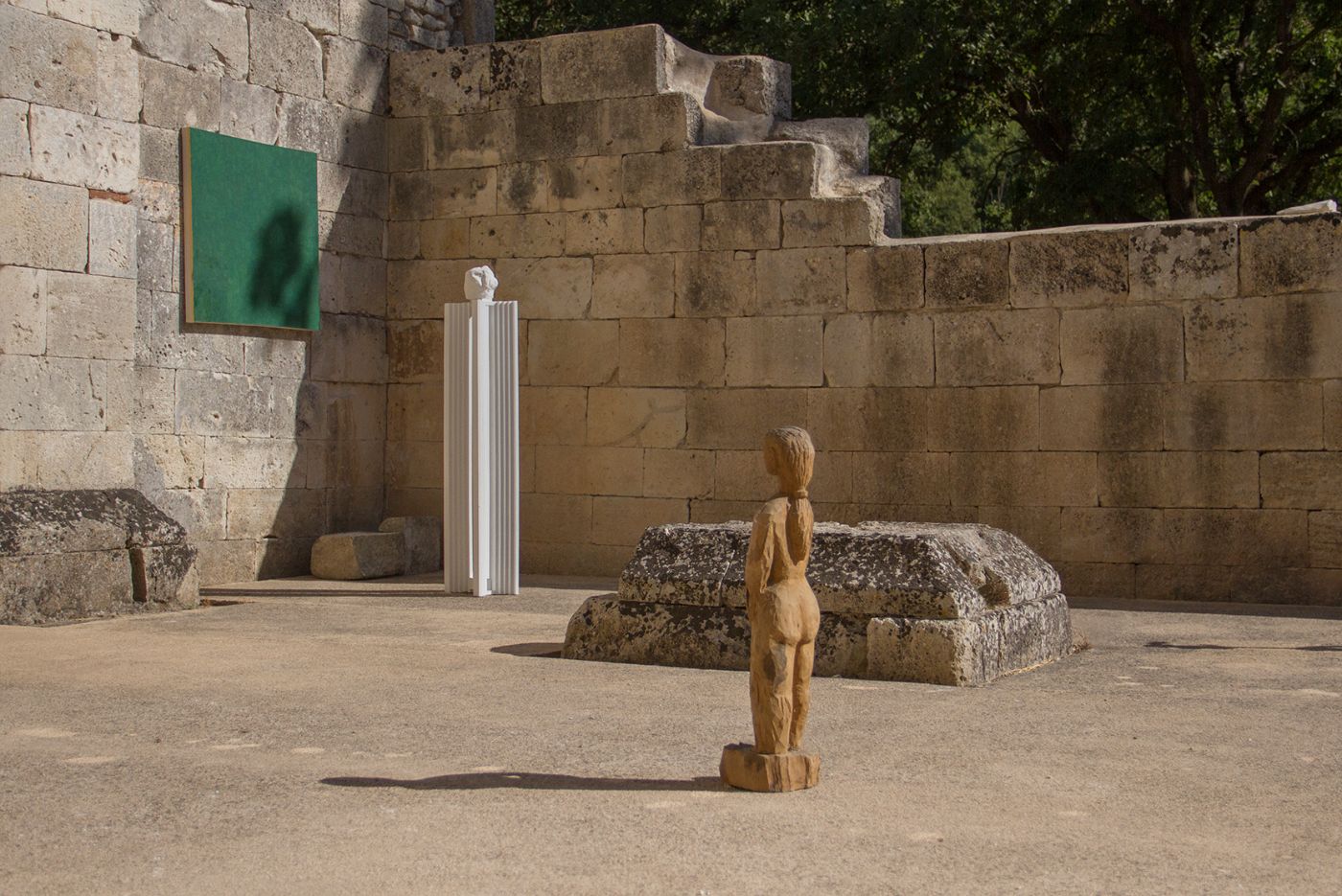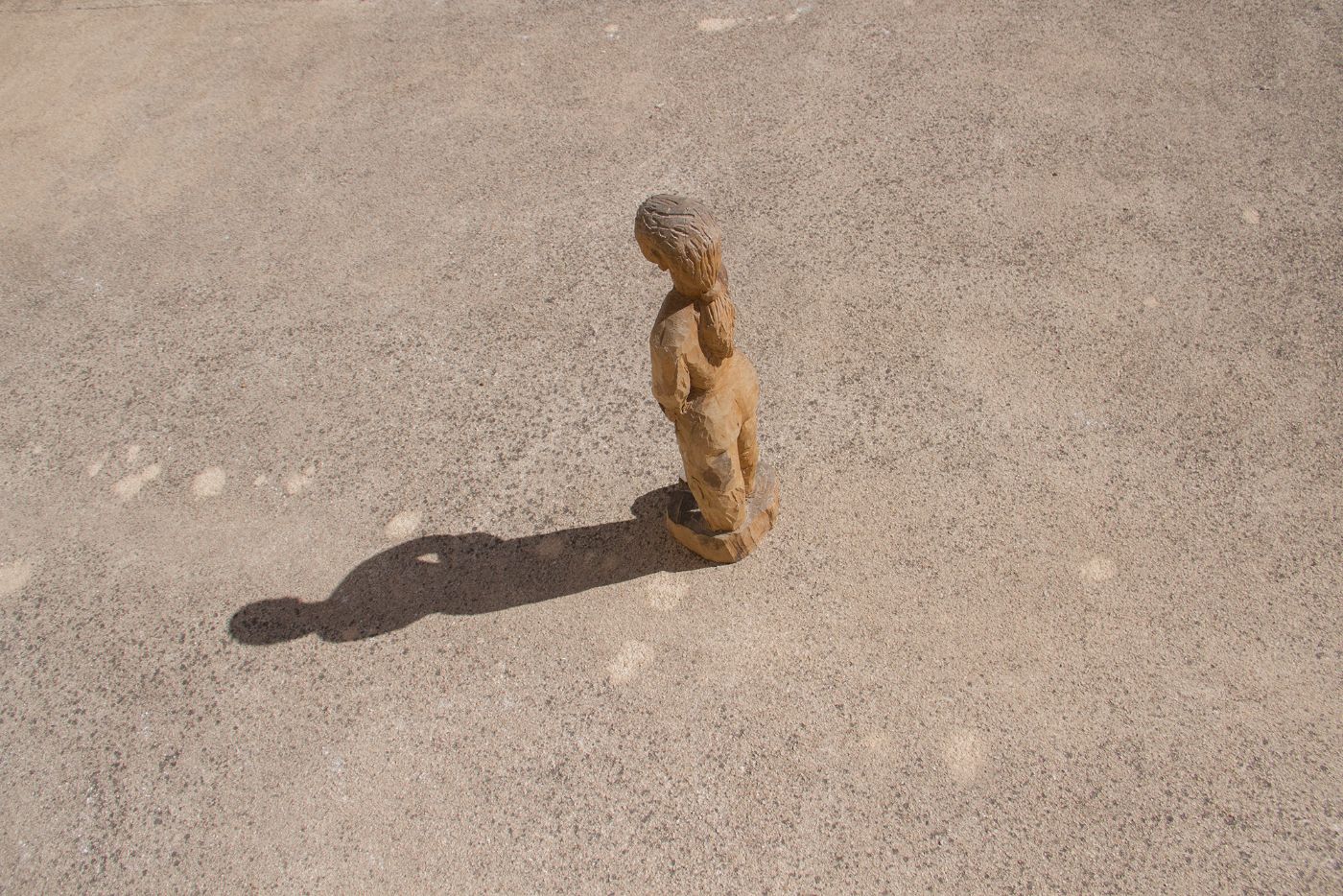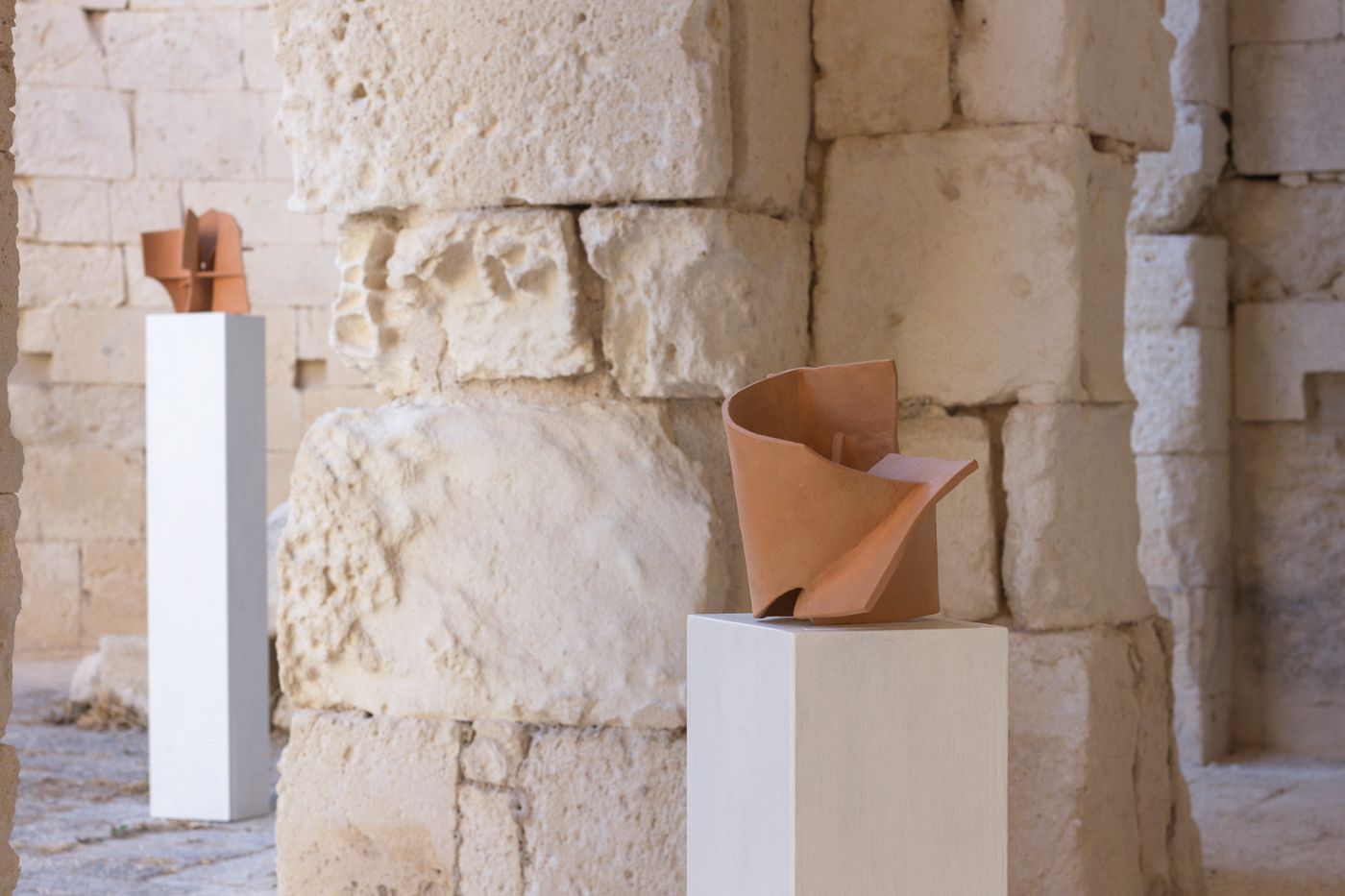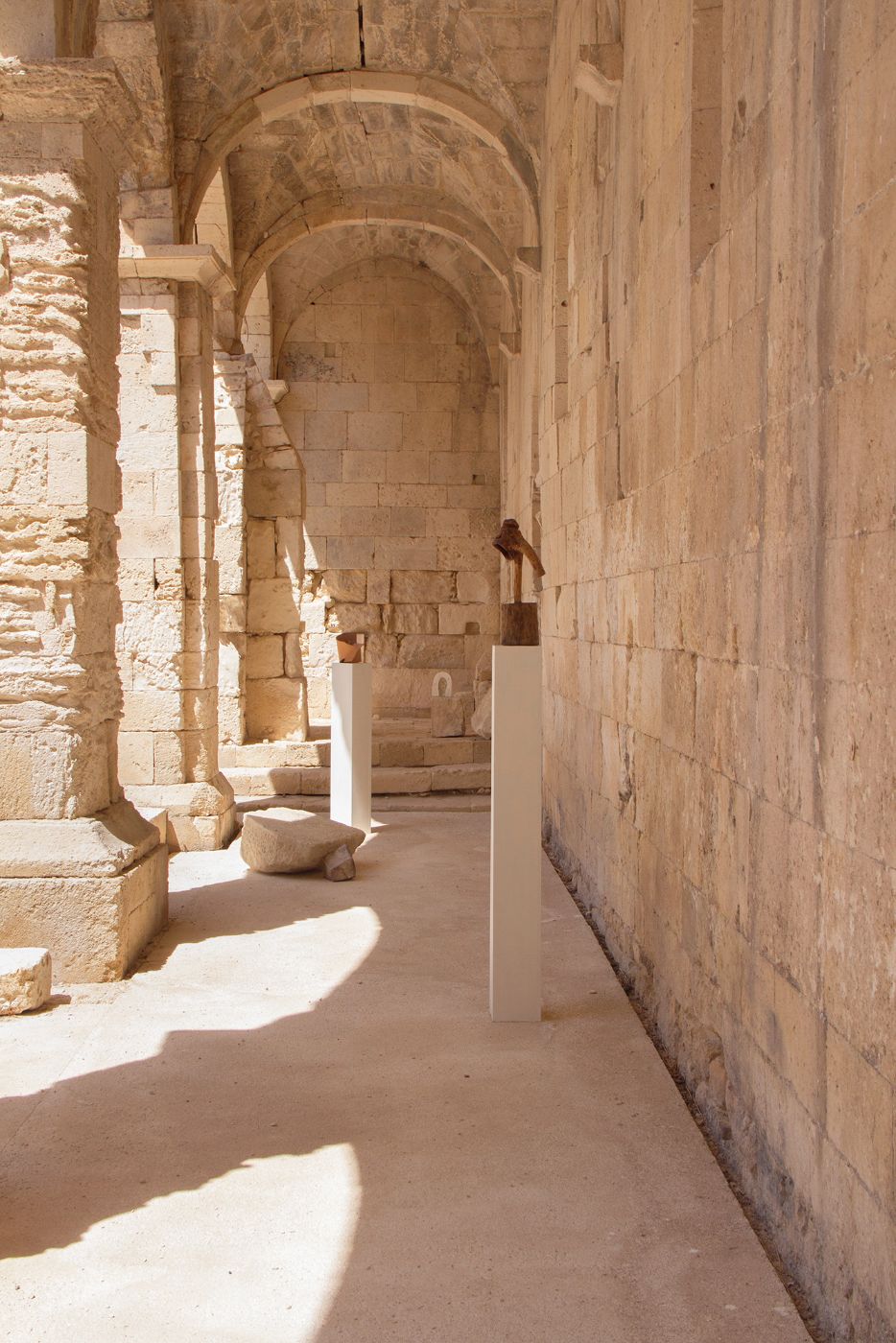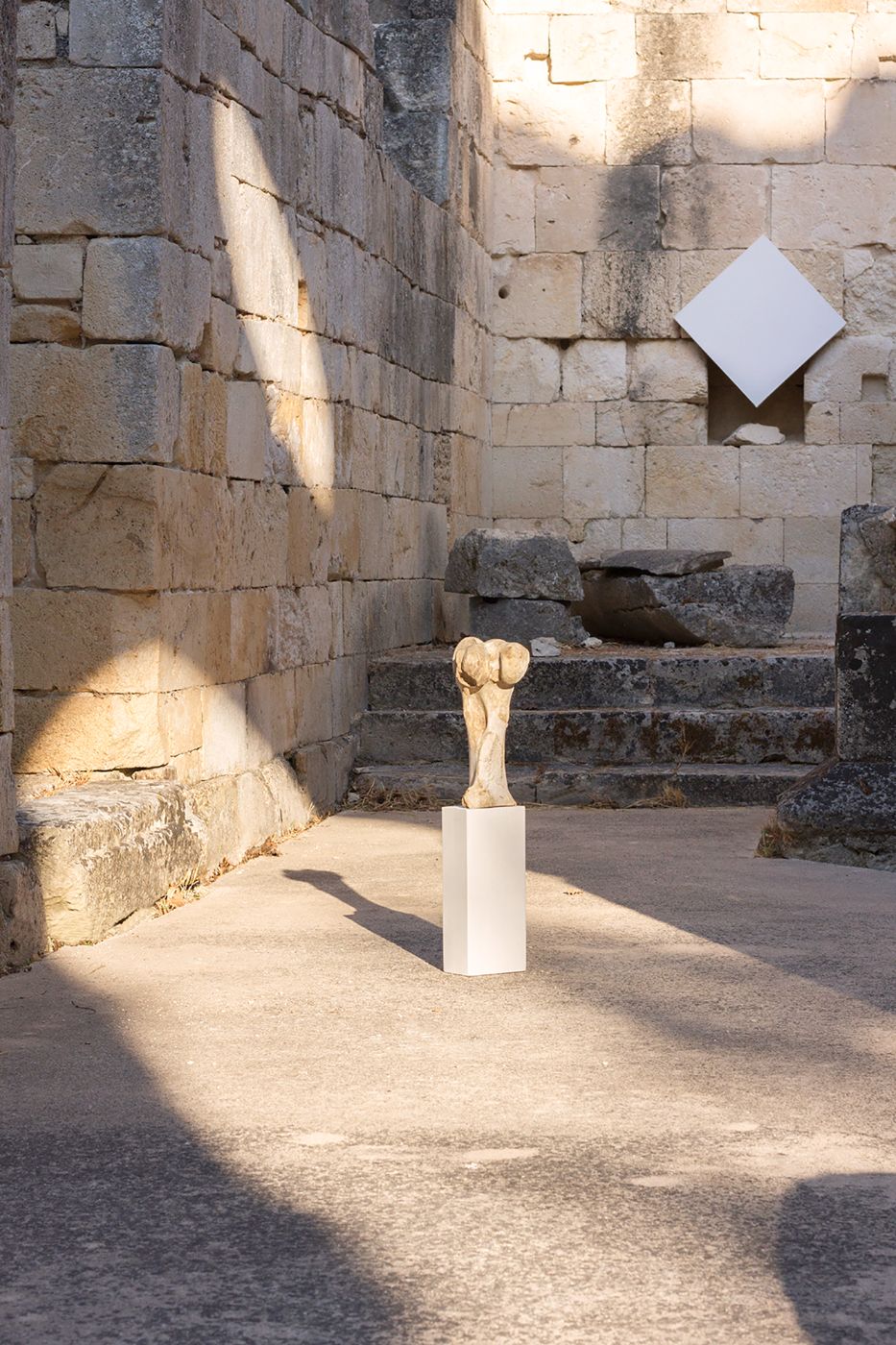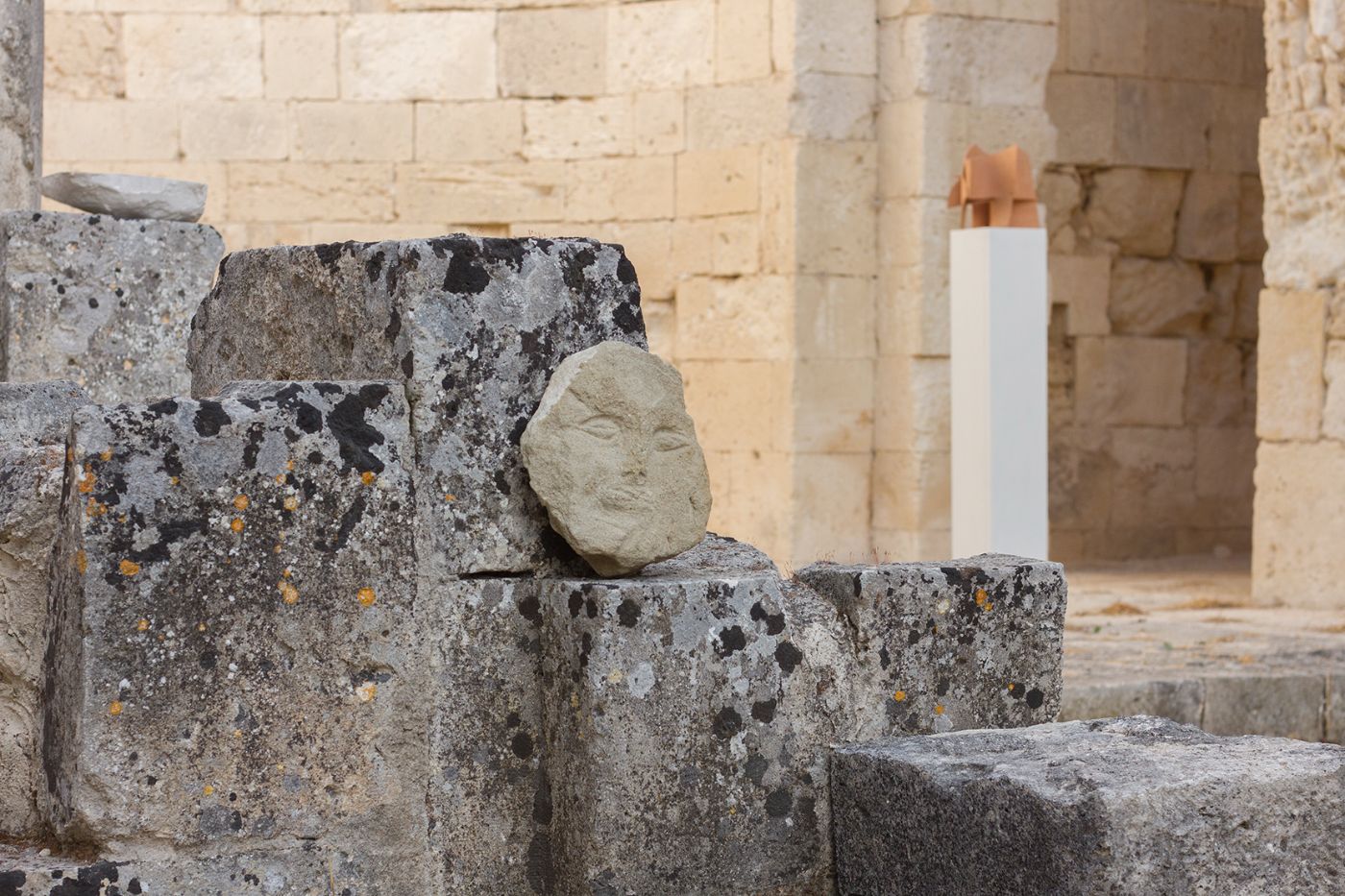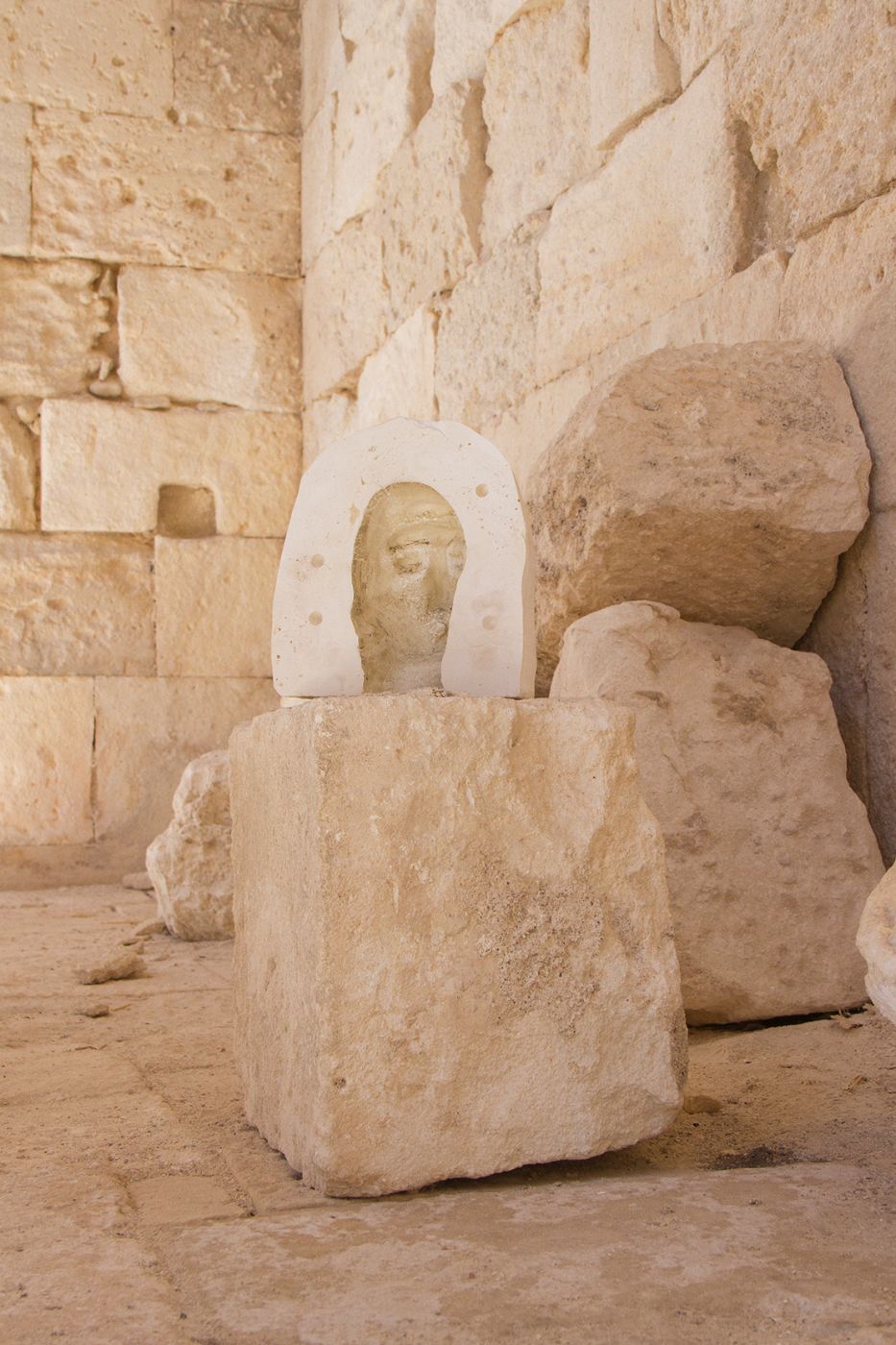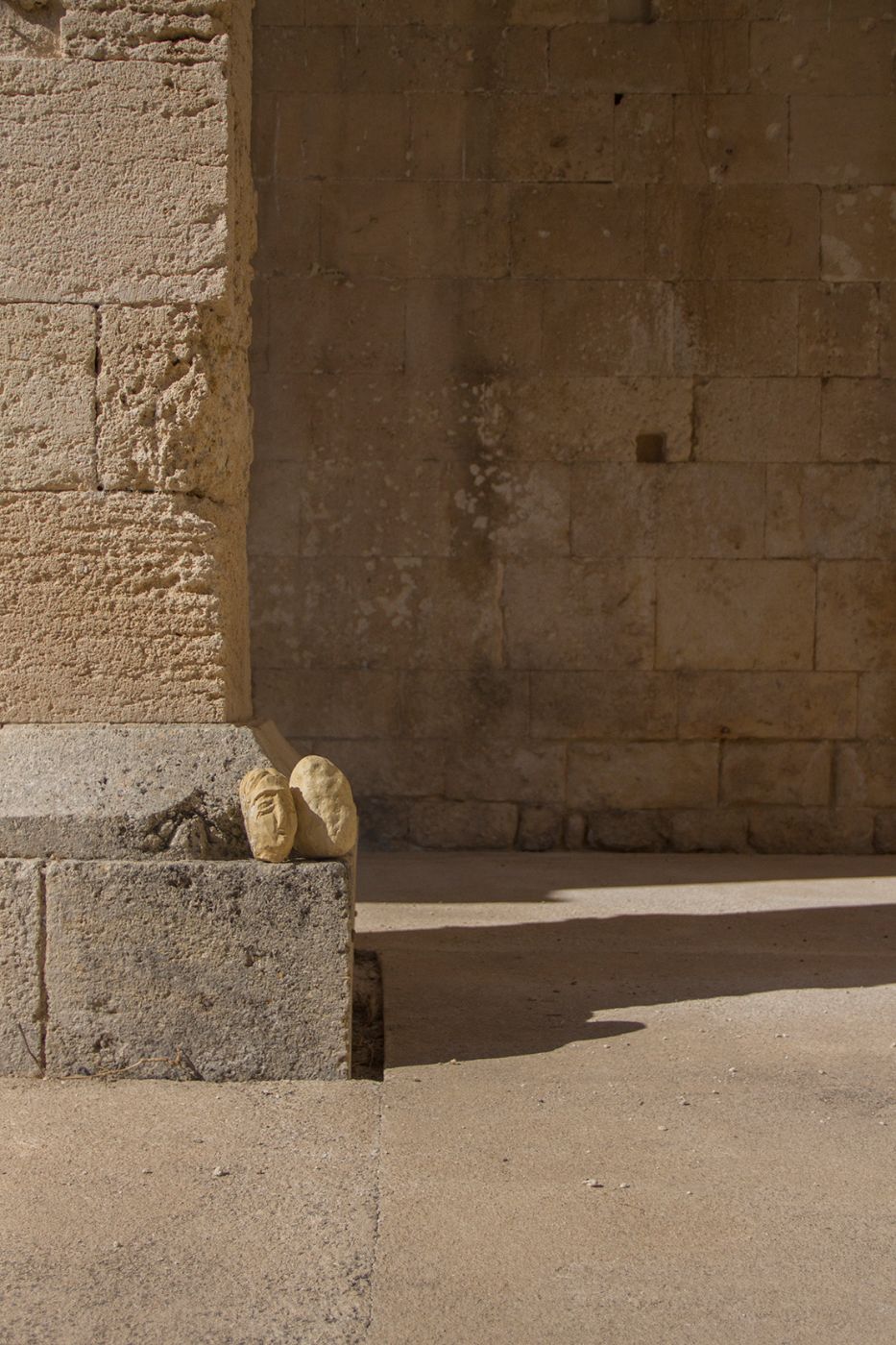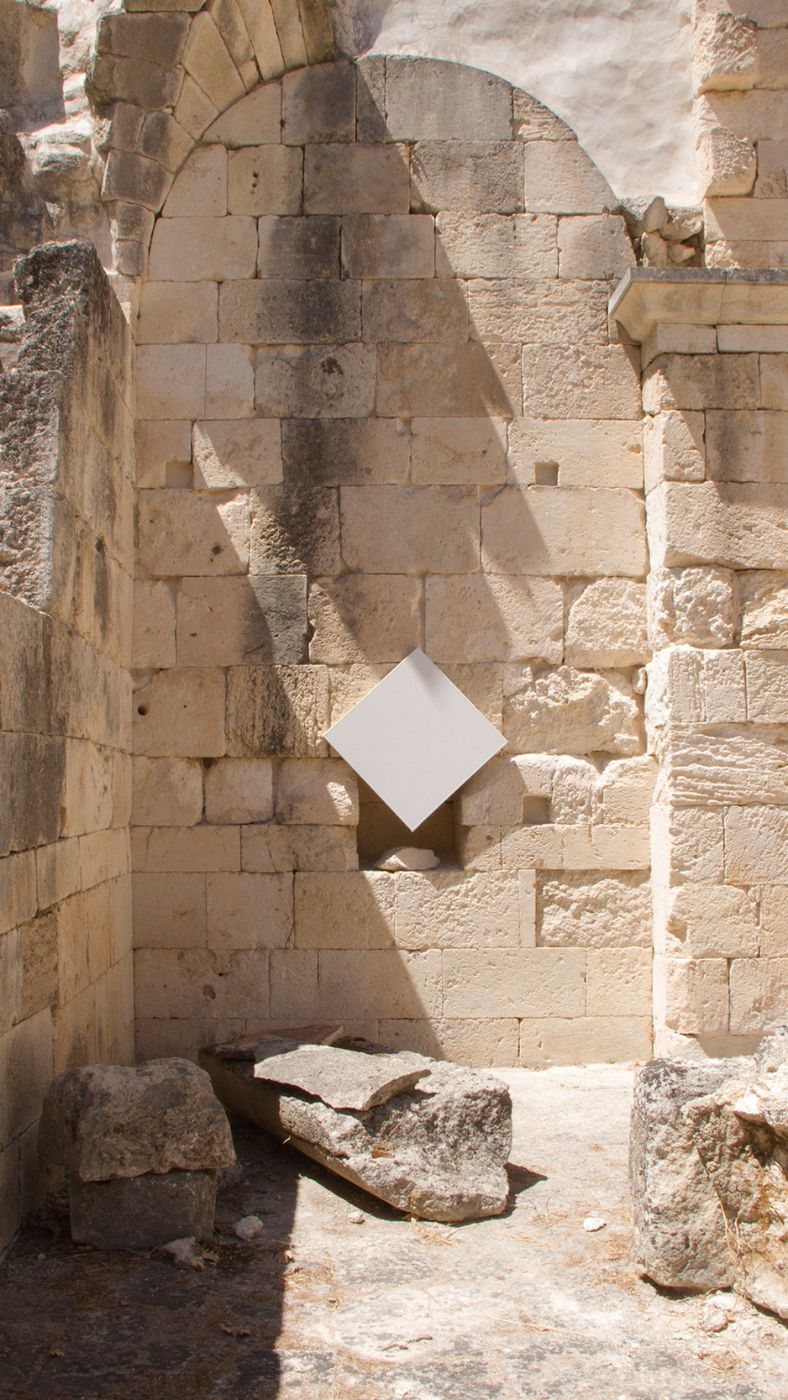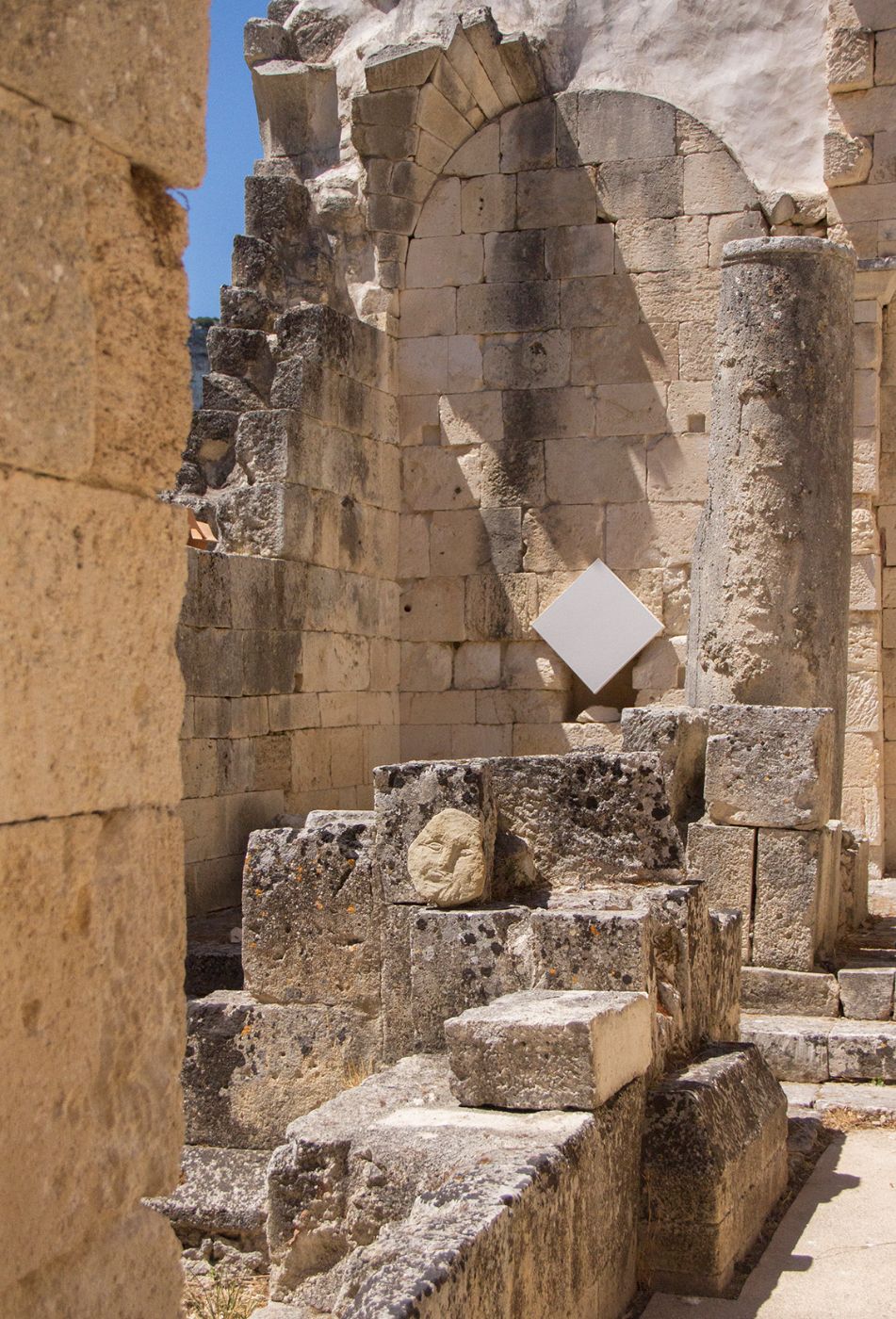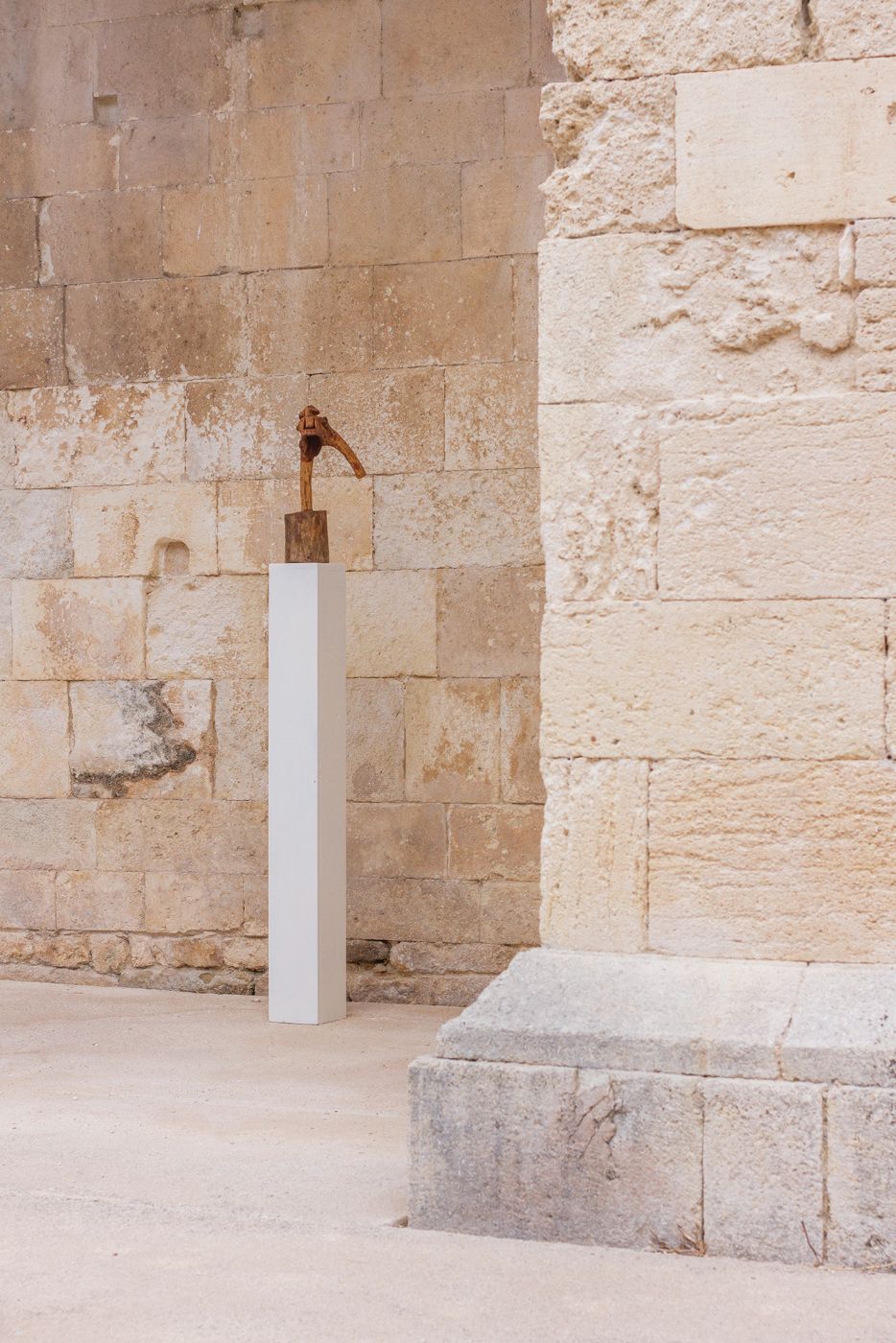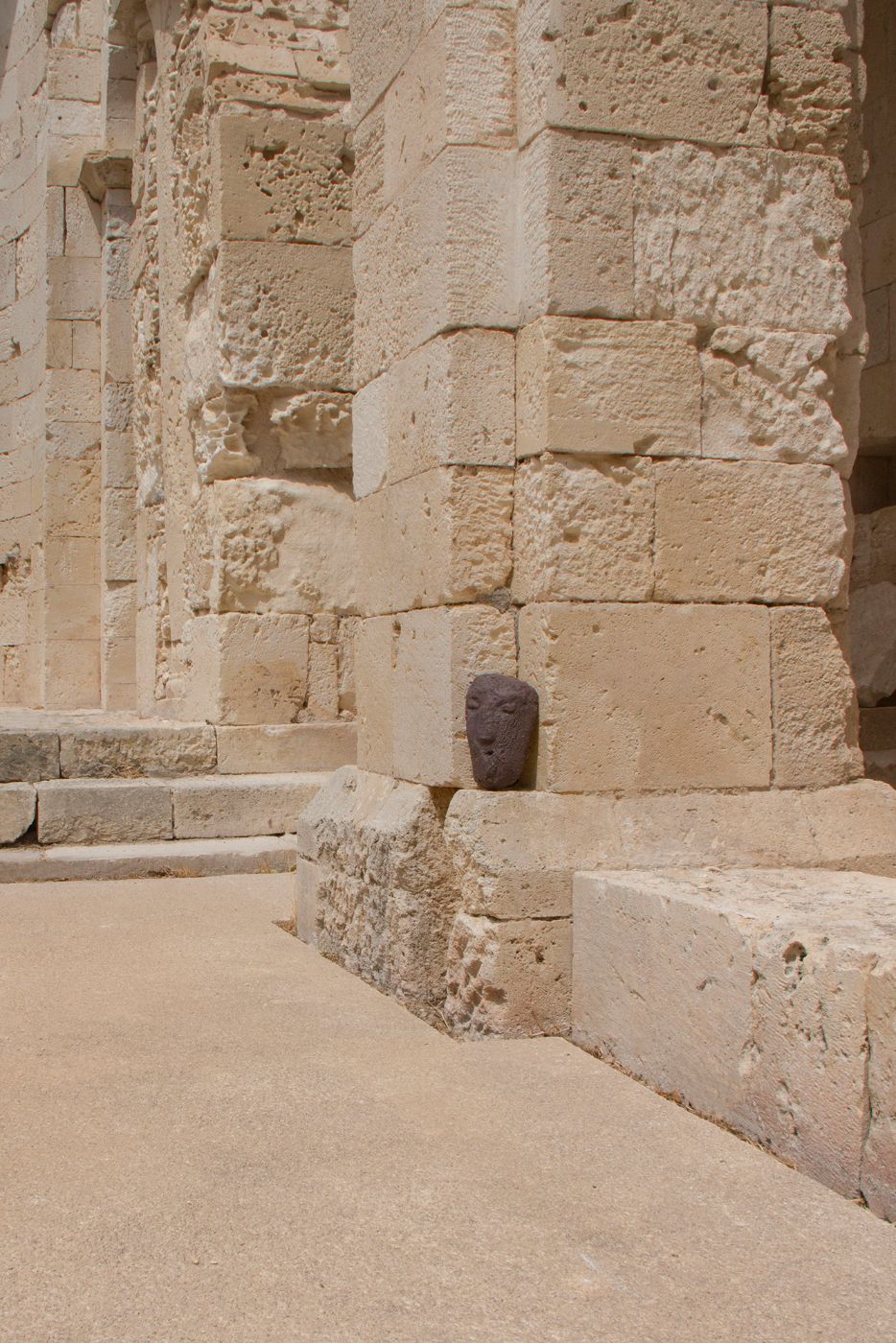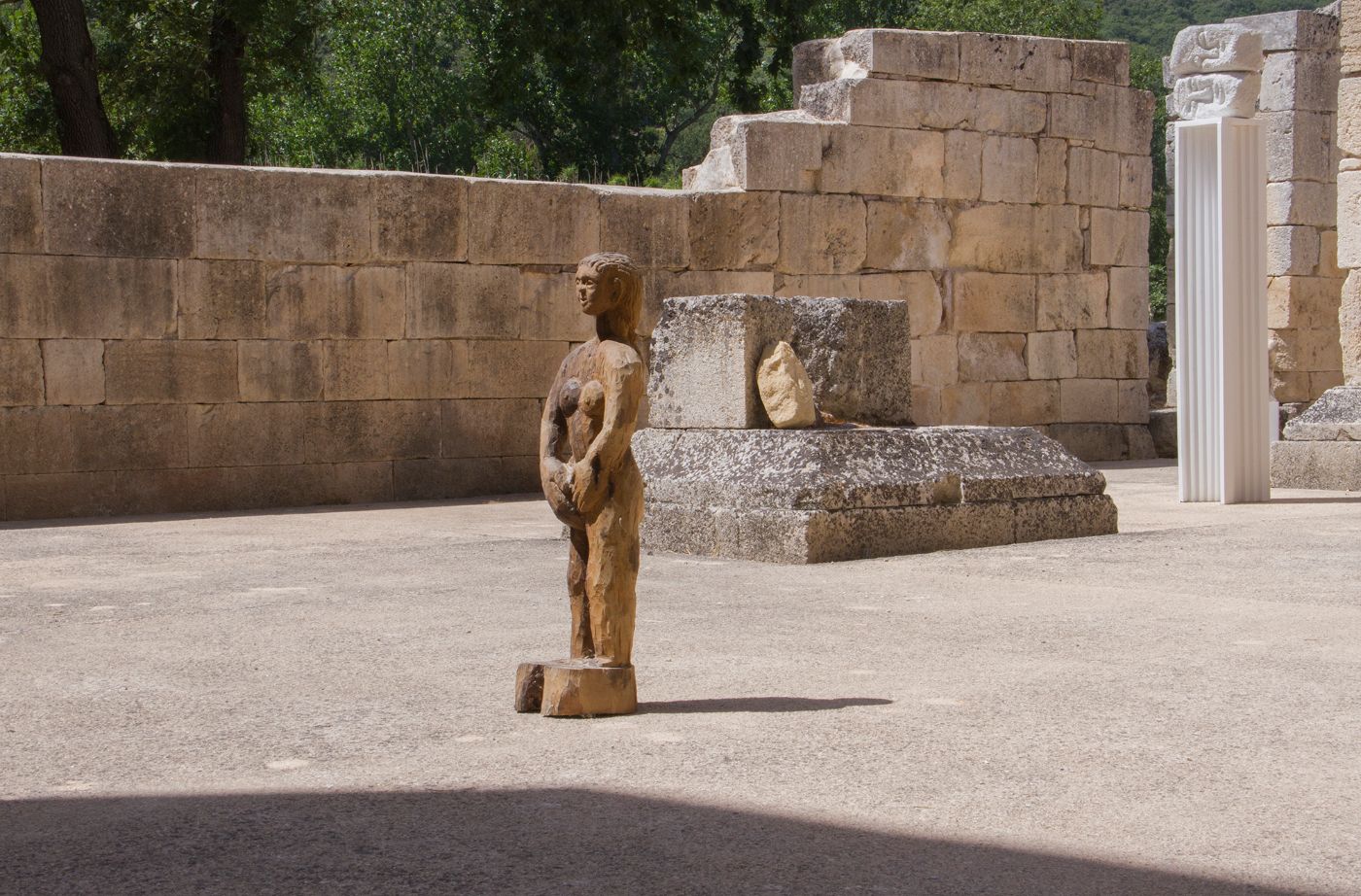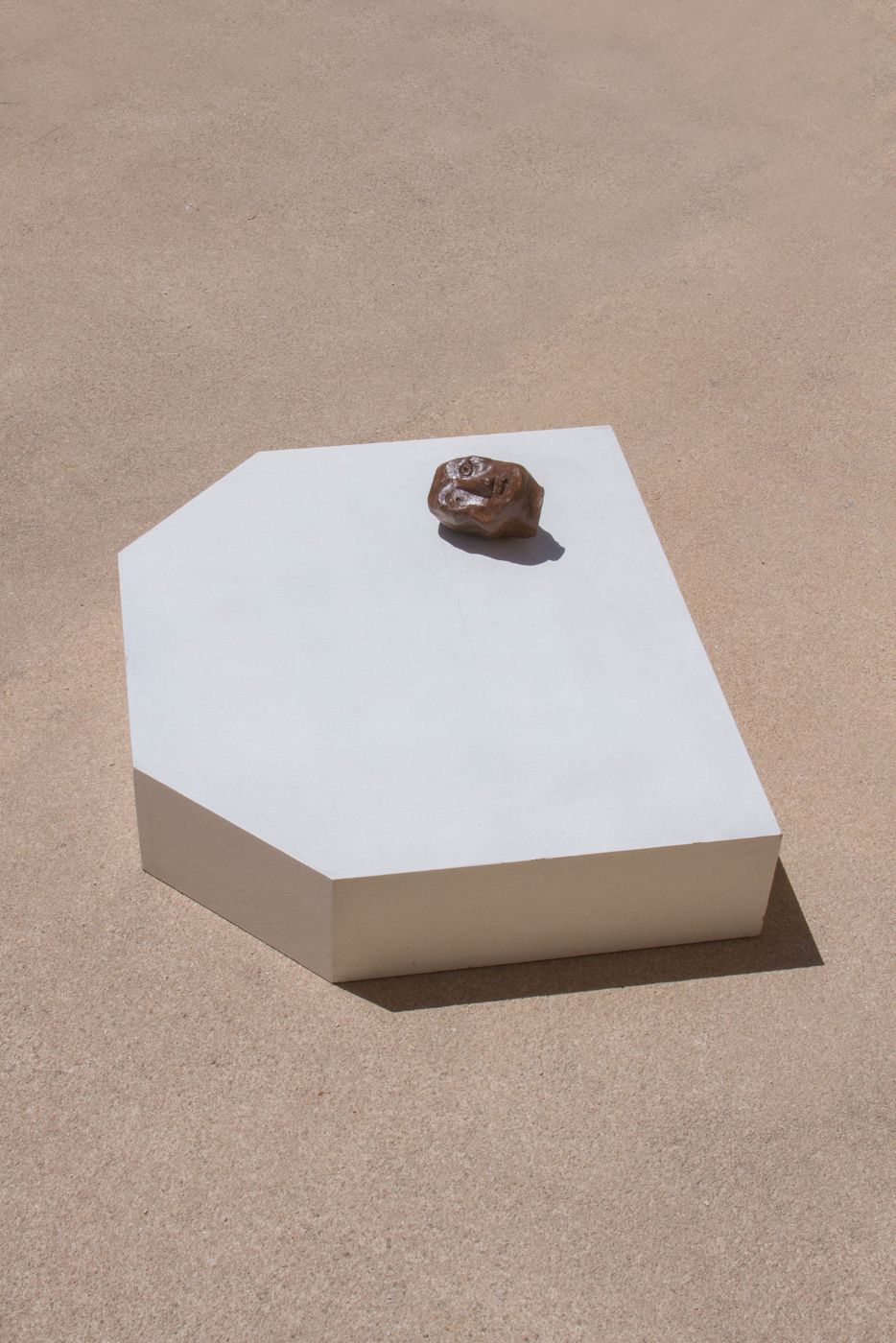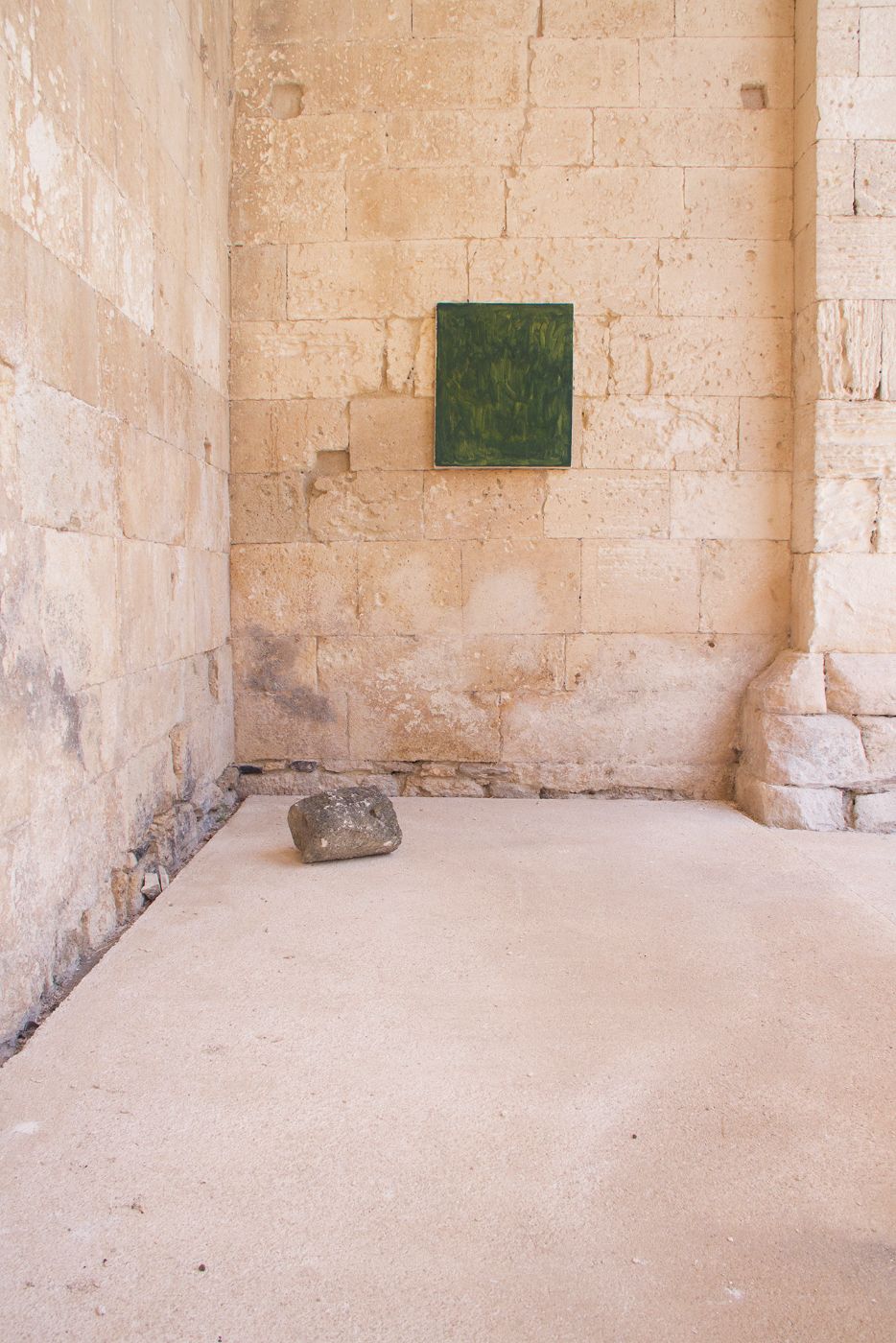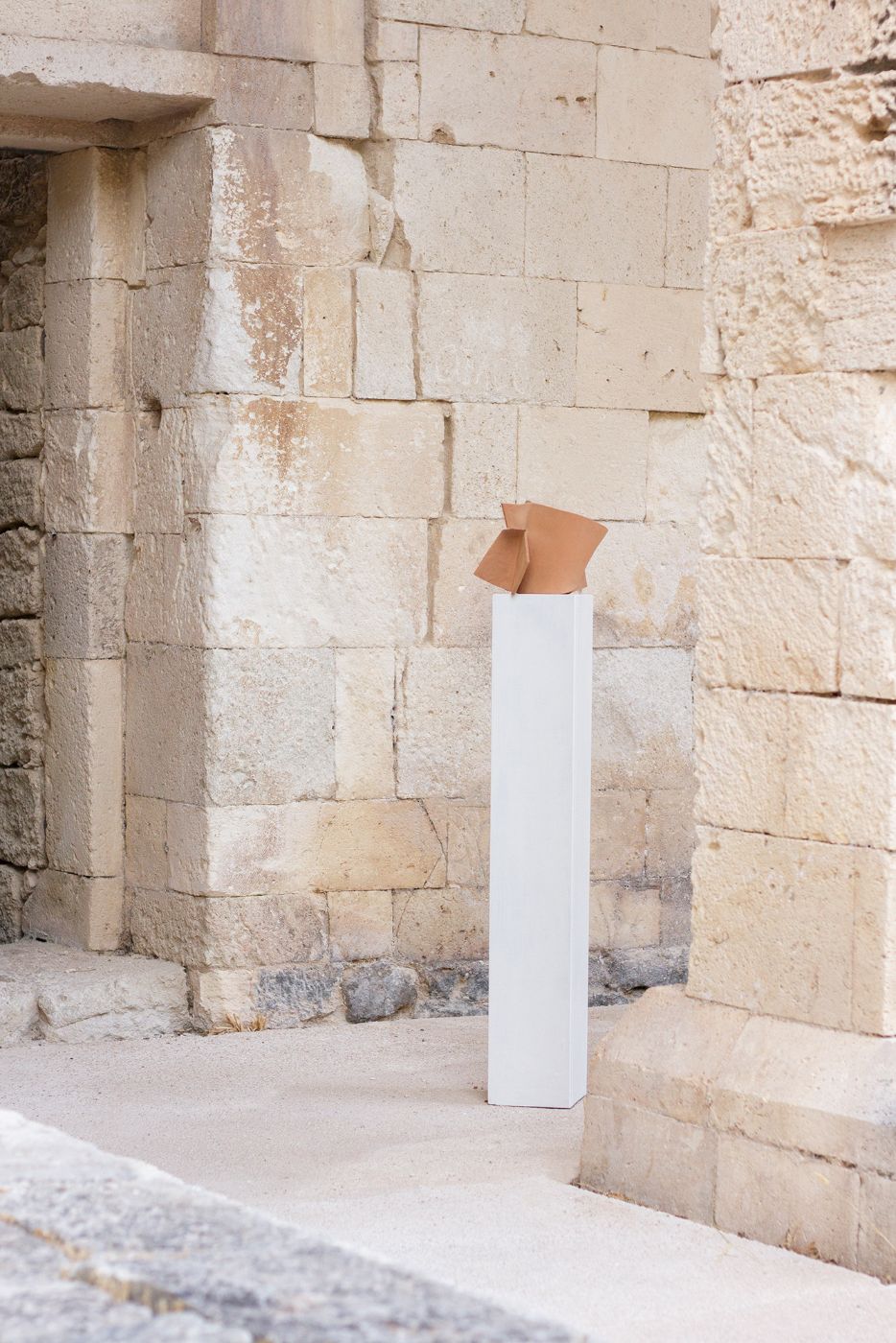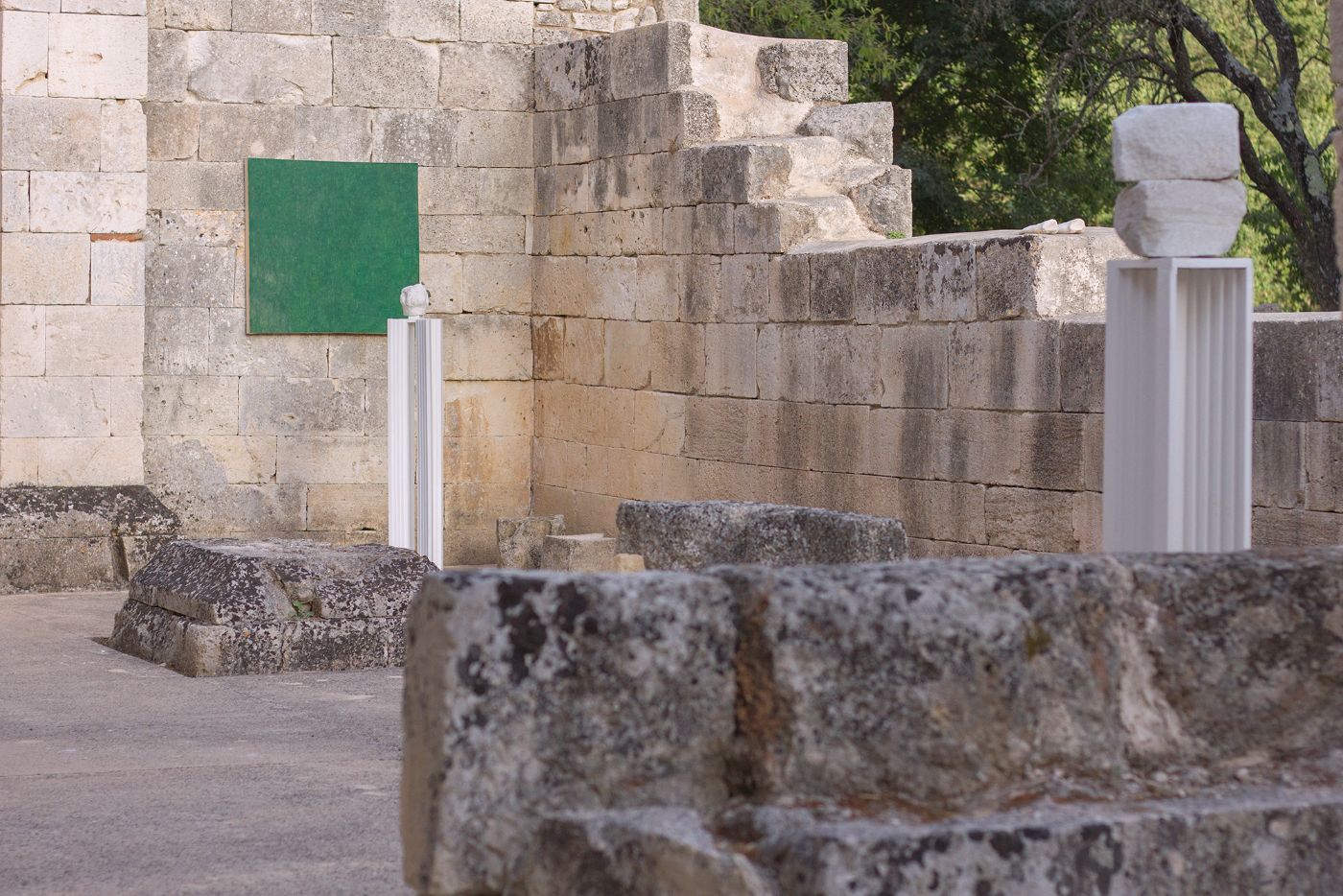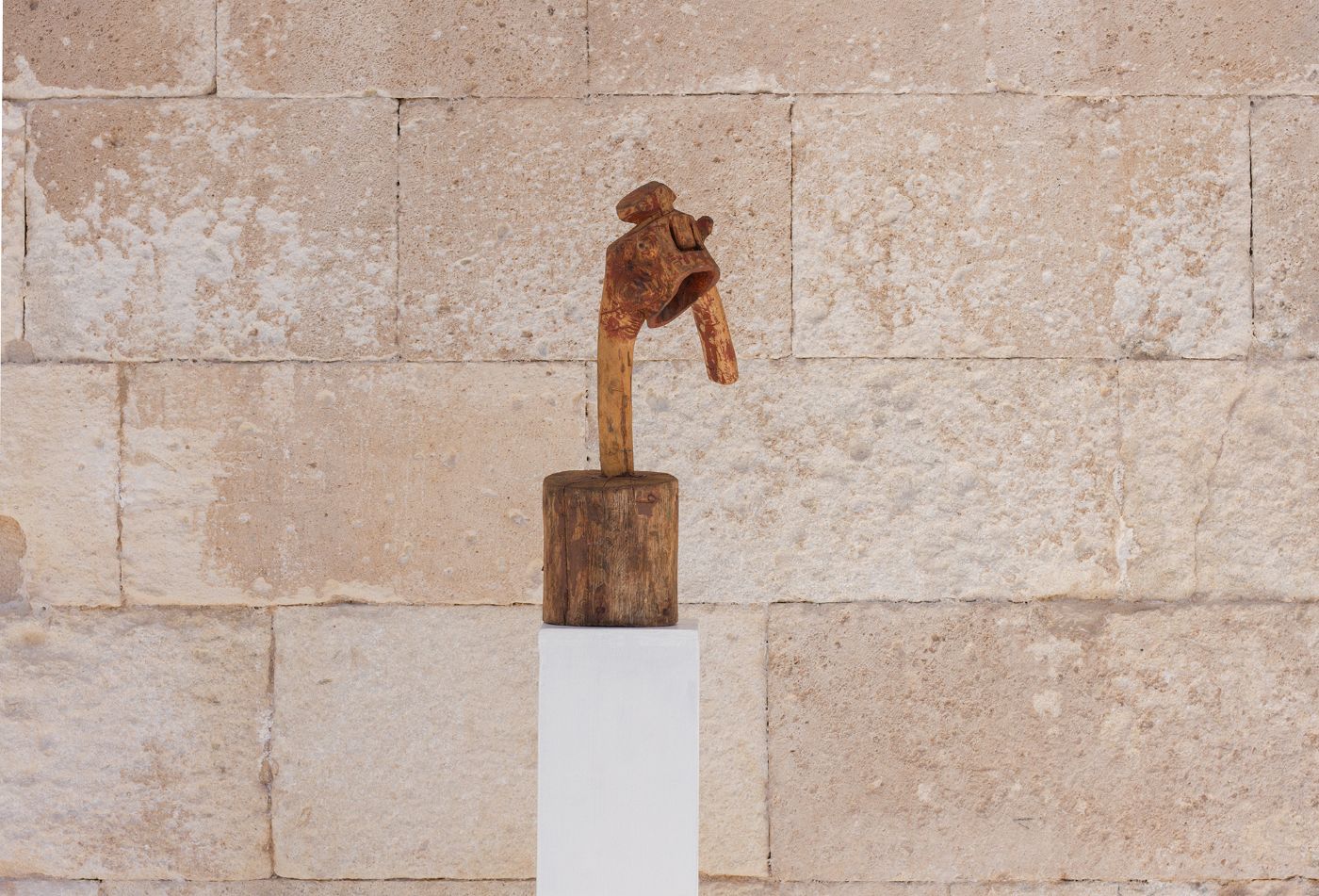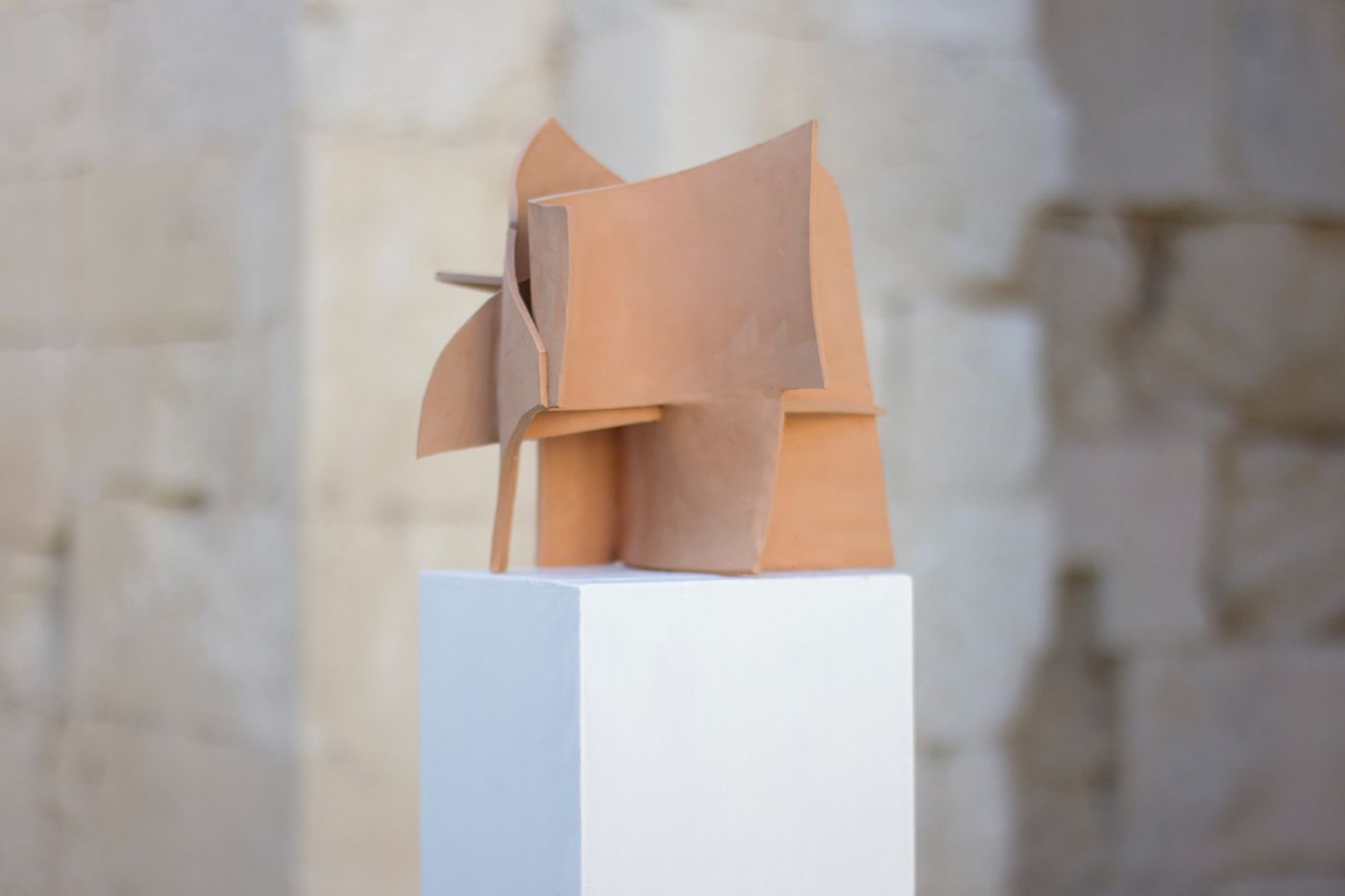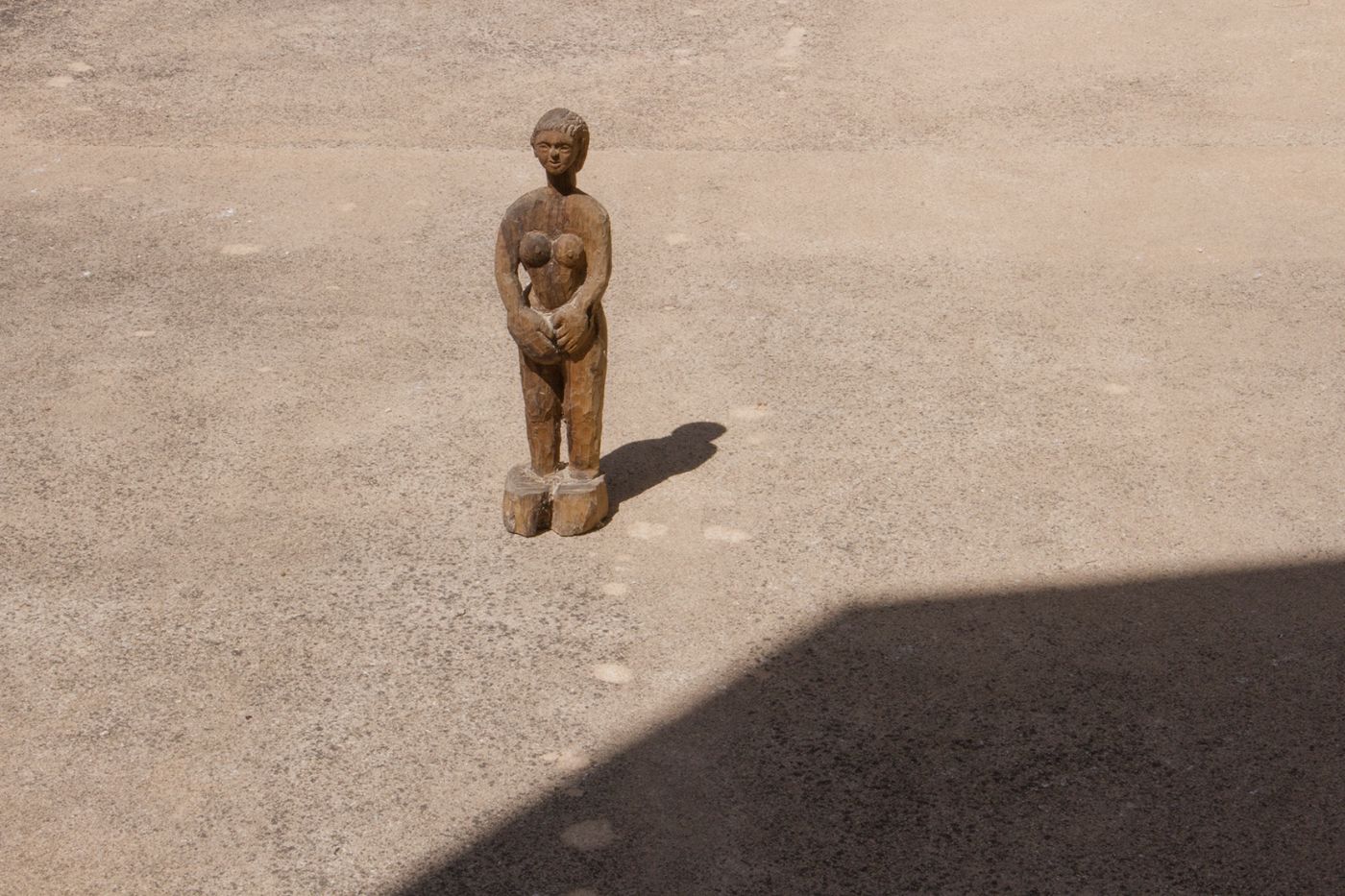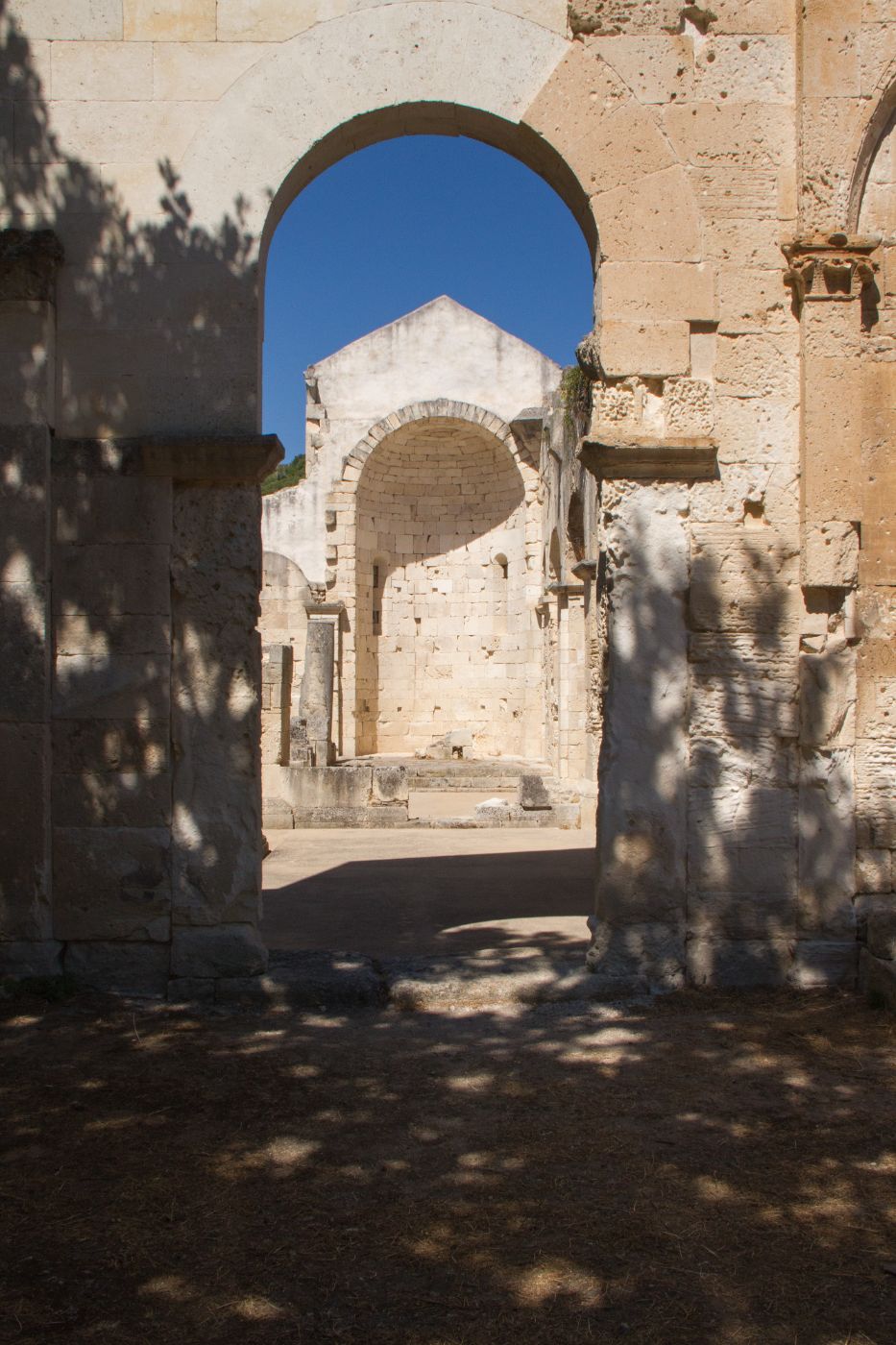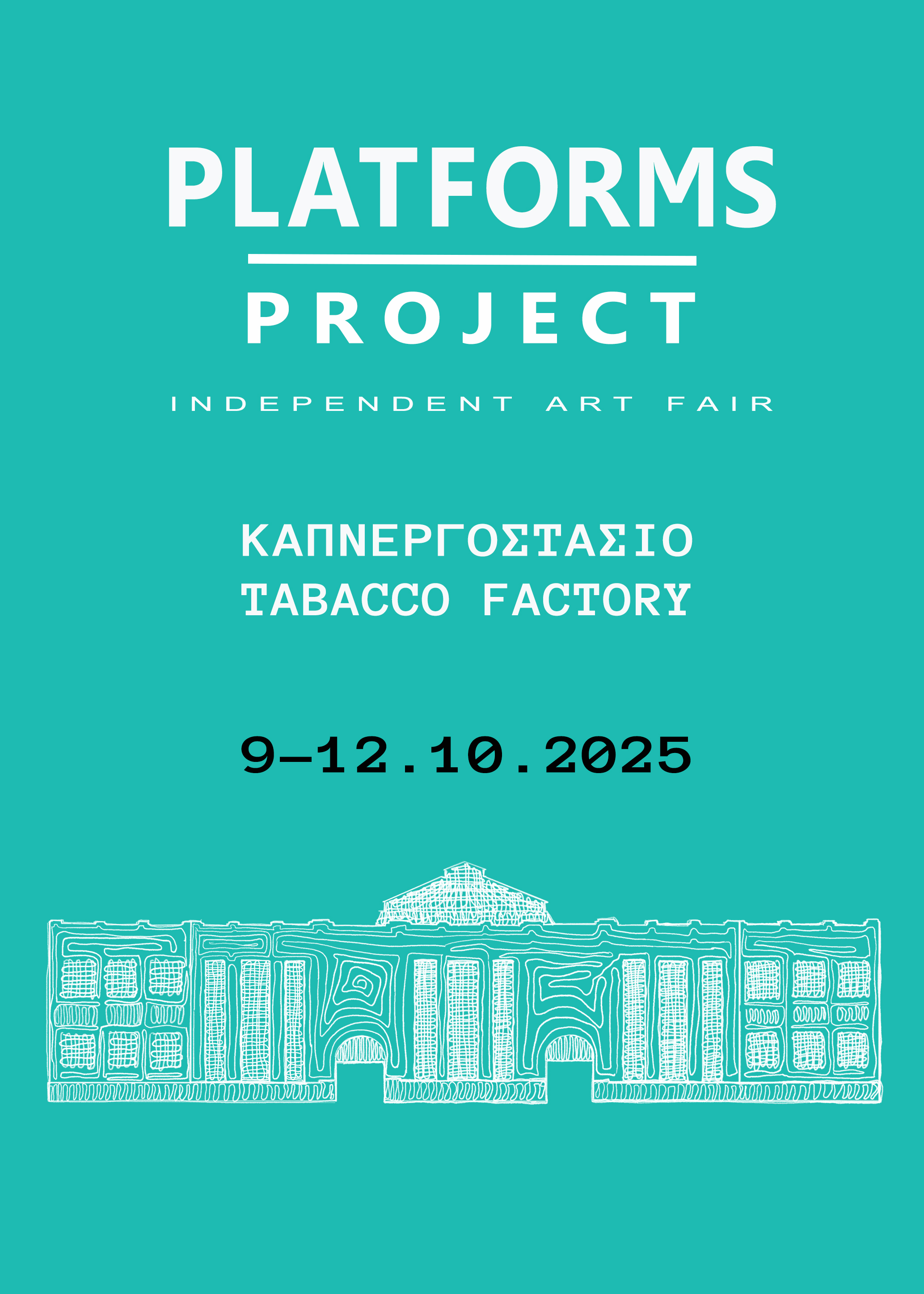Text by Kiriakos Spirou
One can almost hear the midday cicadas and smell the sage and laurel in the hot August breeze when looking at the installation photos of the exhibition La Costante Resistenziale. A guide-tour of Sardinian archaic, weird and marvellous stone sculpture. A collection of various objects is placed inside a medieval ruin, casting stark shadows under the Mediterranean sun. The works are carried by weathered sandstone walls and the bases of now missing columns, while some of them stand on sophisticated white plinths. The surrounding nature is ever-present in the scene, but the walls of the ruin softly separate the exhibition from its natural surroundings.
This open-air sculpture exhibition is the latest instalment of an ongoing research project by Montecristo Project (of Sardinian artists Enrico Piras and Alessandro Sau) and curated by local digital magazine and editorial platform De Rebus Sardois. For several years, Montecristo Project has been exploring the Sardinian countryside through road trips, on a mission to discover folk or popular art from all around the island, and present it in a way that is in dialogue with contemporary art and thinking. The aim of the project is to “address matters of conceptual framing, display and understanding of formal and theoretical heritages underlying centuries of Sardinian imagery.” On the project’s website, we read further: “The island of Sardinia is inhabited by thousands of stone sculptures, mainly popular productions that no one seem to take into account as a form of anthropological or artistic knowledge; while these images seem to be revealing a strength and survivalness [sic] we feel fruitful and compelling, worth to be explored and make known.” [1]
This “survivalness” is the main conceptual hinge for the exhibition, whose title comes from the writings of Sardinian archaeologist Giovanni Lilliu and his concept of costante resistenziale sarda (the Sardinian revolutionary constant). This term refers to Lilliu’s thesis that Sardinian people have effectively resisted external cultural influences for thousands of years. More specifically, he posits that the inhabitants of the interior of Sardinia would resist any attempt at conquer by Phoenicians, Punics, Romans, Byzantines, and others, and somehow handed down their culture unaltered to present-day Sardinians. This idea has been debunked by linguists and archaeologists as a historiographic myth, which nevertheless has managed to nourish an identity concept based on notions of purity and uncontamination that took root in the island’s society. [2]
La Costante Resistenziale exhibition therefore is a chapter within a wider, ongoing project that seeks to situate folk and fine art from Sardinia, both anonymous and eponymous, within a narrative of cultural resistance and autochthonous purity. Piras and Sau are evidently aware of the fine line they’re walking with this project, and at the same time are conscious of the pitfalls it could entail. On their road trips and in the previous exhibitions that are part of the project, the two artists are cautious not to include contemporary “souvenir art” and kitsch representations of Sardinia in their collection. Instead, they focus on mysterious, enigmatic, unpretentious and simply beautiful artefacts collected from across the island, ranging from stone and wooden sculptures in the form of people, animals and faces, to shepherd’s walking sticks.
The exhibition features several of these artefacts, together with contemporary ceramics created by Montecristo Project and the custom-made sculptural plinths that are in dialogue with the objects they carry. [3] Of the numerous sculptures at the exhibition, only two have the name of the artist mentioned; the rest are anonymous creations, and therefore undated. The exhibition was installed for a single day on 08 August 2021, inside the ruin of the church of San Nicola di Silanis, a medieval basilica in the Romanesque style built in the 12th century CE. The remoteness of this site (it’s about an hour’s drive away from the nearest town and far into Sardinia’s northern hills) seems to resonate with the costante resistenziale sardo narrative, but the site’s architecture is also telling in that regard. The church’s roof and most of its walls have collapsed, except for the northern aisle which retains its tiled roof and colonnade. A recent architectural restoration has added a reconstruction of the missing walls, creating a collage between the original ruin and its new additions. The church thus becomes a partially restored ruin that alludes to its original volume, all the while remaining porous and in dialogue with the wilderness around it.
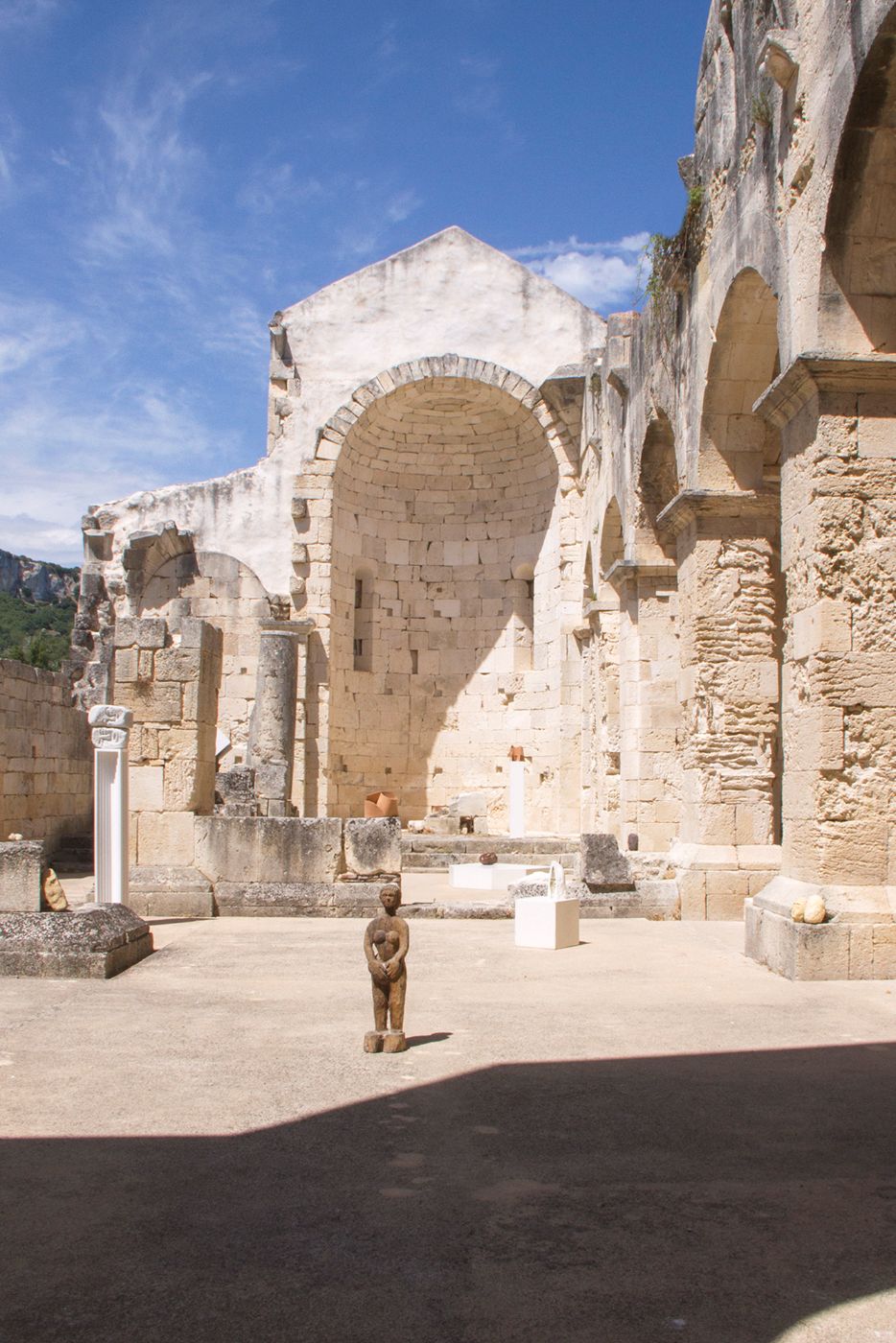
This civilized ruin or architectured wilderness is the perfect setting for this exhibition, since the artworks themselves are trouve, anonymous, somewhere between the uncontaminated wilderness of an imagined Sardinian authenticity and the currents of cultural influence from outside. No man is an island, as they say. And even more so, no Mediterranean island is really an island either: Mediterranean cultures have been in constant dialogue for millennia, through trade, influence and conquest. The constant of resistance therefore must be understood not as a nationalistic myth but as a kind of cultural continuity that is rooted somewhere outside of history. Therefore, we must understand that Montecristo Project’s La Costante Resistenziale went out into the wilderness not to reiterate narratives of purity, but to escape them altogether.
As the artists state on the project’s website, they are “fascinated by that imagery which escapes self-exoticization, or self-historicization”. Whilst touristic souvenirs attempt to self-exoticise and reference the island’s mythical past, other forms escape this tendency: “the primitive forms, the non-culture, have no date, they are ahistorical.” [4] In their theoretical framework that underpins the project, Piras and Sau propose that Lilliu’s concept of costante resistenziale sardo may better be understood through Aby Warburg’s notion of Nachleben.
An influential (and idiosyncratic) art historian of the early 1900s, Warburg developed a theory that understands the continuity of images as happening outside of history and of a subconscious nature. As the artists further explain, images survive beyond logic and style “not because of conscious choices, but because they are latent shapes; they can vanish and reappear without ever dying. There’s a certain mysterious permanence of the Image which trespasses chronological time, history of art, and survives in mankind, in its desire for expression, something which anticipates the notion of art itself.” [5]
La Costante Resistenziale is therefore an attempt to avoid writing history, and looking instead at the past within the present, with eyes unclouded by the narratives of art, nation and history. What really propels this project away from these categories is that it is purely an indigenous pursuit: only when one has spent their lifetime surrounded by thousand-year-old ruins whose purpose and history is to a great extent lost but their forms are ingrained in their psyche, knows how this “permanence of the Image” is related to a kind of timeless life. The landscape of Sardinia — or Lebanon, or Cyprus, or Tunisia for that matter — exemplifies these a-historical cycles of the image, as well as people’s connection to these cycles, a connection that will always remain elusive to the outsider.
What kind of purity of heart is required to read the present as timeless? And isn’t that in a way the very essence of what we call naïf or folk or primitive art? Whether a fallacy or a utopia, following the unconscious hand of the folk artist into a-historicity is a way to discover continuity and a sense of belonging. An inevitably exclusive pursuit, since it is fused with the land, and therefore constitutes identity: an identity that evades the grasp of the nation and modernity, and buries its roots into sensitive, tacit, material, visceral knowledge.
Notes
[1] A guide tour of Sardinian archaic and marvellous stone sculpture. https://aguidetourofsardiniansculpture.tumblr.com/1
[2] For this see: Luciano Gallinari, 2019. Between Mythopoiesis, Stereotypes and Unconscious Projections. Some Case Studies of the Historiography of Medieval Sardinia (19th-21st Centuries). In: Imago Temporis. Medium Aevum, XIII (2019): 55-82. https://repositori.udl.cat/bitstream/handle/10459.1/67434/imatem_a2019n13p55.pdf?sequence=1&isAllowed=y (retrieved 22 Aug 2021)
[3] Montecristo Project always create custom plinths and structures for their exhibitions. You can read more about their approach in this interview from 2018: http://und-athens.com/journal/montecristo-project-iislland
[4] From the project’s website, as above.
[5] From the project’s website, as above.
